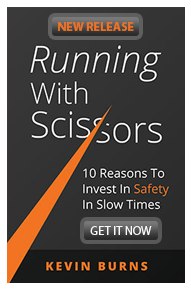Rules Tolerance May Be Worse Than Safety Complacency
Helping employees overcome their tolerance to safety rules paves the way for them to see their own win for buying-in to safety.
 You may live in a neighborhood or community that has a few annoyance problems. Loud muffler vehicles, noisy and nosy neighbors, people who don’t clean up after their dogs all annoy you. But what are you going to do? Yeah, sure, you wish that people were more respectful and courteous. Heck, you even complain to your other neighbors about the carryings-on of the disturbers. But, you don’t have the time or the motivation to take on something that will take effort so you tolerate it. Even though you’re not alone in your annoyance, it’s too big a fight. What’re you gonna do?
You may live in a neighborhood or community that has a few annoyance problems. Loud muffler vehicles, noisy and nosy neighbors, people who don’t clean up after their dogs all annoy you. But what are you going to do? Yeah, sure, you wish that people were more respectful and courteous. Heck, you even complain to your other neighbors about the carryings-on of the disturbers. But, you don’t have the time or the motivation to take on something that will take effort so you tolerate it. Even though you’re not alone in your annoyance, it’s too big a fight. What’re you gonna do?
Now what happens at work when similar issues arise? You’re forced to fill out paperwork safety forms that you swear no one looks at. You’re forced to sit through the same deck of boring PowerPoint slides at safety meetings. You have to endure that one supervisor who has a chip on his shoulder and a badge of authority is his hand. Heck, you even complain to your co-workers about the things you’re forced to endure. But, you don’t have the time or the motivation to take on something that will take effort so you tolerate it. Even though you’re not alone in your annoyance, it’s too big a fight. But, what’re you gonna do?
That is not complacency. That is tolerance. And tolerance should become a serious consideration for supervisors and safety people.
Complacency vs Rules Tolerance
There has been plenty of talk about the hazards of complacency in safety. Complacency: self-satisfaction especially when accompanied by unawareness of actual dangers or deficiencies (Merriam-Webster). In other words, when people get comfortable with their performance, they may pay less attention to risks. Tolerance, on the other hand, is the willingness to endure rules and procedures no matter how annoying. When safety becomes an annoyance that needs to be tolerated, you are moving away from building a strong safety culture.
Do not confuse an employee's willingness to abide by safety rules as proof that they buy-in to safety. Just because they have never had an incident doesn't mean they choose safety as one of their guiding principles. They may simply be tolerating safety rules as a condition of keeping their job.
The guy who speeds, rolling through stop signs and cuts the lawn wearing flip-flops at home doesn't "buy-in" to safety. He tolerates rules at work.
Overcoming Rules Tolerance
A threat of punishment for safety violations doesn't change values. It simply forces people to tolerate rules. You only have to drive on the highway to see the steady parade of people tapping their brakes to indicate that the police are up ahead. People slow down to the speed limit when in front of the cop and then speed up again once they have passed.
Just because you educate them in safety doesn't mean they will choose safety in every situation. Education alone doesn't change values. Education, experience, coaching, and new ideas help build a foundation for safety buy-in. When you help your good people to positively change their perspective of what safety really is, they are more encouraged to buy-in to safety for themselves. They then become the leaders in safety helping safety people and supervisors to improve the safety culture.
But, not every employee has the same values in safety. Not every employee acts the same, performs the same, communicates the same or responds the same. Safety buy-in does not work with blanket approaches. Each employee has a different reason for tolerating some parts of the safety program. They each view supervisors or safety people in different ways. Each employee will buy-in to safety for different reasons. Supervisors and safety people have to acquire the skills to be able to help employees find their win for buying-in to safety. Not just to avoid a loss.
When Employees Buy-in To Safety
Real buy-in to safety happens when safety is embraced as a personal value and a guiding principle. Until employees embrace the safety program, they’re only going to tolerate safety rules. That will necessitate being policed into compliance. To change this, ensure front-line supervisors, managers and safety people get proper management skills-development. Mentoring, coaching, and teamwork building skills help build a better focus on safety culture.
 Helping employees overcome their tolerance to safety rules paves the way for them to see their own win for buying-in to safety. When buy-in occurs, the need for enforcement all but disappears. Coaching and mentoring take its place. Engagement levels rise. And engagement helps to overcome complacency in safety. Help build more safety leaders among your crews. Engage each employee one-on-one. It will take time but it will be worth it.
Helping employees overcome their tolerance to safety rules paves the way for them to see their own win for buying-in to safety. When buy-in occurs, the need for enforcement all but disappears. Coaching and mentoring take its place. Engagement levels rise. And engagement helps to overcome complacency in safety. Help build more safety leaders among your crews. Engage each employee one-on-one. It will take time but it will be worth it.
Kevin Burns has authored ten books on human performance and safety, including his most recent release, PeopleWork - The Human Touch in Workplace Safety. Buy it now on Amazon. Then, consider bringing Kevin's consulting expertise to your company or have him speak at a safety event.
©2017 ZeroSpeak Corporation and Kevin Burns.
No part of this post may be reproduced without the expressed consent of the author.


